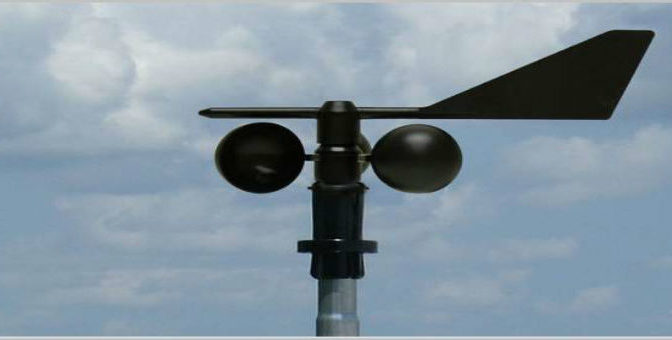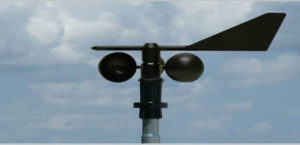High capital investment and design complexities are some of the major restraints for the anemometer market. Growing use of anemometer in various industries such as mining and construction is a major opportunity for the global anemometer market. Concerted R&D efforts by industry players are focused on developing rotor blades longer than 650 feet for a 50 MW offshore wind turbine, which is 2.5X longer and is capable to generate over 6X more output than the largest blades and turbines are now in operation. The Wind Energy Technologies Office (WETO) working to increase the performance and consistency of next-generation wind technologies while reducing the cost of wind energy. This research helped increase the average capacity factor from 22% for wind turbines installed before 1998 to an average of 33% now. Wind energy costs have reduced from over 55 cents/kilowatt-hour (kWh) in 1980 to an average of 2.35 cents in the U.S.
Anemometer is a device comprising wind direction and wind speed sensors, mainly used for wind speed measurement. These instruments help detect changes in physical property and velocity of air. The global anemometer market is projected to reach US$ 561.85 million by 2025, exhibiting a CAGR of 5.79% over the forecast period. The anemometer market is mainly driven by increasing consumption of wind energy and supportive regulatory policies for wind energy projects.
Moreover, increasing demand for advanced instruments for air pressure, velocity and quality monitoring is fueling the growth for anemometers globally. Tracking weather conditions, air pollution and air pressure are some major applications of anemometer that are driving the growth of the market globally. The air pollution is increasing globally that is increasing the use of air quality monitoring equipment to restrict any kind of airborne disease. For that reason many Government organizations are concentrating on air quality monitoring products that is further boosting the anemometer market growth.
The increasing number of wind energy generation projects in the pipeline during the forecast period would drive growth of the global anemometers market. According to the American Wind Energy Association in U.S. current pipeline of wind energy projects under construction or in advanced development as of the end of the third quarter reached 29,634 MW, a 27% year-over-year growth and on track to provide 10% of the electricity demands in the U.S. by 2020, alongside US$ 85 billion in economic activity.
High capital investment and design complexities are some of the major restraints for the anemometer market. Growing use of anemometer in various industries such as mining and construction is a major opportunity for the global anemometer market. Concerted R&D efforts by industry players are focused on developing rotor blades longer than 650 feet for a 50 MW offshore wind turbine, which is 2.5X longer and is capable to generate over 6X more output than the largest blades and turbines are now in operation. The Wind Energy Technologies Office (WETO) working to increase the performance and consistency of next-generation wind technologies while reducing the cost of wind energy. This research helped increase the average capacity factor from 22% for wind turbines installed before 1998 to an average of 33% now. Wind energy costs have reduced from over 55 cents/kilowatt-hour (kWh) in 1980 to an average of 2.35 cents in the U.S.
North America accounted for largest market share in anemometer market, in 2016, followed by Europe and Asia Pacific respectively. According to GWEC, total wind power installed capacity in North America was 97,611 MW, in 2016. The U.S. is the leading market for anemometer in North America, accounting for 82,184 MW wind power installed in 2016, followed by Canada and Mexico respectively.
The US is the second largest market in terms of total installed capacity after China. At the end of 2016, American wind installations capacity totaled over 82 GW, which was enough to power 24 million American households. In Canada 702 MW of new wind capacity came online, making it the tenth largest annual market. Between 2012 and 2016, Canada’s installed wind energy capacity has grown by an average of 18 percent annually.
China is the leading market for anemometer in Asia Pacific, due to its China is the global wind power leader, adding 33 GW of new capacity, followed by Japan, South Korea, Taiwan and India respectively. The total wind power installed capacity in China was 168,732 MW, in 2016. According to BNEF, Asia-Pacific and China alone accounted for almost 47% of the total global investments in clean energy during 2016. The U.A.E, South Africa, Brazil and Argentina are the dominant markets for anemometer across Middle East, Africa, and Latin America.



